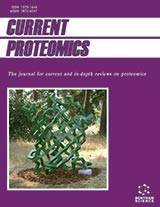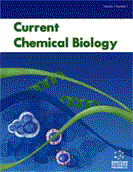Abstract
It is well known that the mutations in BRCA1 or BRCA2 gene can cause the hereditary breast cancer. However, it is a tedious and expensive task to identify the mutant genes that impact breast cancer due to the large number of genes and very small number of samples. Furthermore, the expressive energy of the subset of genes in comparison to that of one individual gene at a time is considered to have a profound influence in case of breast cancer. In this paper 7 tumors with BRCA1 mutation and 8 tumors with BRCA2 mutation have been used to identify the subset of discriminative genes. A combination of a non-parametric supervised and an unsupervised statistical method is introduced to analyze the gene expressions and the distinctive genes among the highly expressed genes are identified. The most important genes are filtered using the area under the curve (AUC) measure. These filtered genes are then used to build a hidden Markov model (HMM) to analyse their inter-relationship and identify the best subset among them. In addition, Protein-Protein interaction network is generated to analyse the pathways of the identified genes and their link with BRCA1 or BRCA2. Transcription Factors are identified and Gene Set Enrichment Analysis (GSEA) is calculated for the identified genes subset and the results are compared with the results mentioned in other cancer literature. Experimental results suggest that only 8 genes have been identified out of 3226 genes by the proposed hybrid method. Out of the 8 identified genes, 5 have been linked with breast cancer by other studies. Moreover, 7 genes have been associated with numerous diseases that may result in breast cancer. Furthermore, 8 transcription factors were identified that cover the identified genes and BRCA1 and BRCA2. Lastly, GSEA enrichment score of 0.52 is calculated for the identified genes and it is comparatively better considering the small subset of identified genes.
Keywords: Breast cancer, HMM, BRCA1, BRCA2, gene selection, hereditary.
Graphical Abstract
Current Bioinformatics
Title:Distinctive Phenotype Identification for Breast Cancer Genotypes Among Hereditary Breast Cancer Mutated Genes
Volume: 10 Issue: 1
Author(s): Md. Rafiul Hassan, Imran ul Haq, Emad Ramadan, Joarder Kamruzzaman and Adel F. Ahmed
Affiliation:
Keywords: Breast cancer, HMM, BRCA1, BRCA2, gene selection, hereditary.
Abstract: It is well known that the mutations in BRCA1 or BRCA2 gene can cause the hereditary breast cancer. However, it is a tedious and expensive task to identify the mutant genes that impact breast cancer due to the large number of genes and very small number of samples. Furthermore, the expressive energy of the subset of genes in comparison to that of one individual gene at a time is considered to have a profound influence in case of breast cancer. In this paper 7 tumors with BRCA1 mutation and 8 tumors with BRCA2 mutation have been used to identify the subset of discriminative genes. A combination of a non-parametric supervised and an unsupervised statistical method is introduced to analyze the gene expressions and the distinctive genes among the highly expressed genes are identified. The most important genes are filtered using the area under the curve (AUC) measure. These filtered genes are then used to build a hidden Markov model (HMM) to analyse their inter-relationship and identify the best subset among them. In addition, Protein-Protein interaction network is generated to analyse the pathways of the identified genes and their link with BRCA1 or BRCA2. Transcription Factors are identified and Gene Set Enrichment Analysis (GSEA) is calculated for the identified genes subset and the results are compared with the results mentioned in other cancer literature. Experimental results suggest that only 8 genes have been identified out of 3226 genes by the proposed hybrid method. Out of the 8 identified genes, 5 have been linked with breast cancer by other studies. Moreover, 7 genes have been associated with numerous diseases that may result in breast cancer. Furthermore, 8 transcription factors were identified that cover the identified genes and BRCA1 and BRCA2. Lastly, GSEA enrichment score of 0.52 is calculated for the identified genes and it is comparatively better considering the small subset of identified genes.
Export Options
About this article
Cite this article as:
Hassan Rafiul Md., Haq ul Imran, Ramadan Emad, Kamruzzaman Joarder and Ahmed F. Adel, Distinctive Phenotype Identification for Breast Cancer Genotypes Among Hereditary Breast Cancer Mutated Genes, Current Bioinformatics 2015; 10 (1) . https://dx.doi.org/10.2174/157489361001150309121435
| DOI https://dx.doi.org/10.2174/157489361001150309121435 |
Print ISSN 1574-8936 |
| Publisher Name Bentham Science Publisher |
Online ISSN 2212-392X |
 41
41 1
1 1
1
- Author Guidelines
- Bentham Author Support Services (BASS)
- Graphical Abstracts
- Fabricating and Stating False Information
- Research Misconduct
- Post Publication Discussions and Corrections
- Publishing Ethics and Rectitude
- Increase Visibility of Your Article
- Archiving Policies
- Peer Review Workflow
- Order Your Article Before Print
- Promote Your Article
- Manuscript Transfer Facility
- Editorial Policies
- Allegations from Whistleblowers
Related Articles
-
Modulation of Tumour-Related Signaling Pathways by Natural Pentacyclic Triterpenoids and their Semisynthetic Derivatives
Current Medicinal Chemistry Editorial [Hot topic: Target Therapy of Bone Metastases and Tumours (Guest Editors: M. Caraglia and D. Santini)]
Current Cancer Drug Targets Aspartic Proteases in Drug Discovery
Current Pharmaceutical Design The Tumor Suppressor Role of the Ras Association Domain Family 10
Anti-Cancer Agents in Medicinal Chemistry Azo Reductase- Activated Colon- Targeting Prodrugs of Aminosalicylates for Inflammatory Bowel Disease: Preparation, Pharmacokinetic and Pharmacodynamic Profile
Inflammation & Allergy - Drug Targets (Discontinued) An overview of ABC and SLC Drug Transporter Gene Regulation
Current Drug Metabolism De Novo DNMTs and DNA Methylation: Novel Insights into Disease Pathogenesis and Therapy from Epigenomics
Current Pharmaceutical Design Biological Activities of Carlina Oxide Isolated from the Roots of Carthamus caeruleus
The Natural Products Journal Use of Transgenic Mice as Models for Prostate Cancer Chemoprevention
Current Molecular Medicine Circulatory Estrogen Level Protects Against Breast Cancer in Obese Women
Recent Patents on Anti-Cancer Drug Discovery Stem Cells: Their Role in Breast Cancer Development and Resistance to Treatment
Current Pharmaceutical Biotechnology Is Src a Viable Target for Treating Solid Tumours?
Current Cancer Drug Targets Protective and Therapeutic Effects of Ghrelin in the Gut
Current Medicinal Chemistry The Antidepressant-like Effects of Estrogen-mediated Ghrelin
Current Neuropharmacology Role of General Adversarial Networks in Mammogram Analysis: A Review
Current Medical Imaging Designing Peptide Mimetics for the Treatment of Multiple Sclerosis
Mini-Reviews in Medicinal Chemistry Screening and Identification of Differentially Expressed Genes Between Diabetic Nephropathy Glomerular and Normal Glomerular via Bioinformatics Technology
Combinatorial Chemistry & High Throughput Screening The Antiangiogenic and Antitumoral Activity of Titanocene Y* In Vivo
Letters in Drug Design & Discovery Recent Technological Advances in the Mass Spectrometry-based Nanomedicine Studies: An Insight from Nanoproteomics
Current Pharmaceutical Design Emerging Molecular Functions of MicroRNA-9: Cancer Pathology and Therapeutic Implications
Anti-Cancer Agents in Medicinal Chemistry

















.jpeg)








